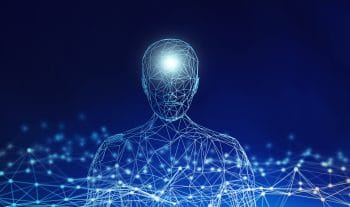The Brain and Body Connection
Categories: Expert Advice

What Is the Brain and Body Connection?
The brain and body connection is like in marriage, “in sickness and in health.” The brain doesn’t get sick without involving the body, and the body doesn’t become ill without affecting the brain. A person can’t effectively work a recovery program on just one, the brain or the body, without considering the other. When the body gets better, the brain can get better, and when the brain gets better so can the body. Psychiatric and Opioid use disorders are inter-linked in the same way the brain and the body are connected. A psychiatric disorder contributes to how a person uses or reacts to Opioids, which in turn affects their mental health, and a Opioid use disorder affects a person’s mental health, which in turn affects how they use Opioids.
How Does the Brain and Body Connection Work?
The effects of an untreated psychiatric disorder like major depression on the brain may include having a depressed mood, inappropriate guilt, negative thinking, and a sense of hopelessness. The affects on the body may include insomnia, significant weight loss or gain, fatigue or loss of energy, and an impaired immune system and increased risk of illness. People initially use Opioids and other drugs like cocaine or alcohol for the desired short-term effects on the brain and the body. A person does not use substances for the undesired long-term effects. No one says, “I think I’ll use a Speedball so I can be frightened, paranoid, physically sick, and possibly die,” but that is exactly what happens…eventually.
The short-term desired effects of Opioids and other drugs will sooner or later lead to the undesired long-term effects with continued abuse. For example, some of the short-term effects of Speedballs for the brain is the feeling of euphoria, self-confidence, and enhanced thinking, while for the body it would be an increased sense of energy, decreased fatigue, and decrease of appetite. On the other hand, the undesired long-term effects for the brain are depression, delusions, and paranoia, while for the body it includes extreme fatigue, strokes, and heart failure.
The effects of long-term Opioid and other use can resemble and worsen many of the symptoms of an untreated psychiatric disorder. For example, long term abuse of crack cocaine has the same symptoms as paranoid schizophrenia. A few of these symptoms can include for the brain chemical changes, hallucinations, and delusions (false beliefs). For the body it may include impaired immune system, possible heart damage, and a high risk of death to self or others.
What Causes Mental Illness and Addiction?
For many years the dominant theory of what causes mental illness and addiction was a family interaction, home environment, or really childhood training. Families suffered guilt and remorse from being told they were responsible for their children developing psychiatric disorders like schizophrenia or addictive disorders like opioid use disorders or alcoholism. New studies and research no longer support the one-sided theories. Psychiatric and substance use disorders are caused by a combination of factors working together. This means a variety of predisposing factors produce vulnerability to certain illness instead of a single cause. In fact, all illnesses including heart disease and cancer develop form a mixture of influences such as biology, heredity, and environment.
A formula that simplifies the many complex factors that contribute to psychiatric and addictive disorders is illustrated below (Daley, 1994, p.16):
| PSYCHIATRIC ILLNESS = Biology (primary influence) + Psychology + Social or Environment + Stress
ADDICTIVE ILLNESS = Biology (primary influence) + Psychology + Social or Environment + Stress + Opioids and Other Drugs. |
The factors that contribute to the development of psychiatric and substance use disorders resulted in the model called the “bio-psycho-social-cultural-environmental-spiritual” approach, which has developed over the past fifteen years. The causes, signs, course, and outcome of health and disease are generally viewed as a product of the interplay or interaction between these factors. The biological component is made up of a person’s biochemistry, heredity, and genetics. It is the foundation of medical disorders of the brain. Recent advancements in brain imaging technologies are allowing scientist to examine the brain in living people with more clarity than ever before (National Institute of Mental Health, 2002). The scientific evidence that psychiatric disorder and addictive disorders are brain disorders now exist.
The vulnerability to developing these disorders, as well as an individual’s response to stress or the ability to cope with emotional challenges, is caused primarily by differences in brain chemistry. The brain is an amazing organ of the human body. It is always active, even when we are sleeping. It produces enough electrical energy to power a 40-watt light bulb for 24 hours even though it weighs only three pounds and is the size of a softball (U.S. Department of Health and Human Services, 1999). The working of the brain depends on the ability of the nerve cells to communicate with each other at these sites through the process of neurotransmission. Neurons communicate with one another by sending electrical messages to other neurons through a process called neurotransmission. Neurotransmissions carry messages between nerve vessels and the brain processes this information. All of this is going on in the brain, affecting the connections in the body. If we add opioids and other drugs to the equation, there is a direct affect on the people who use and those we love.